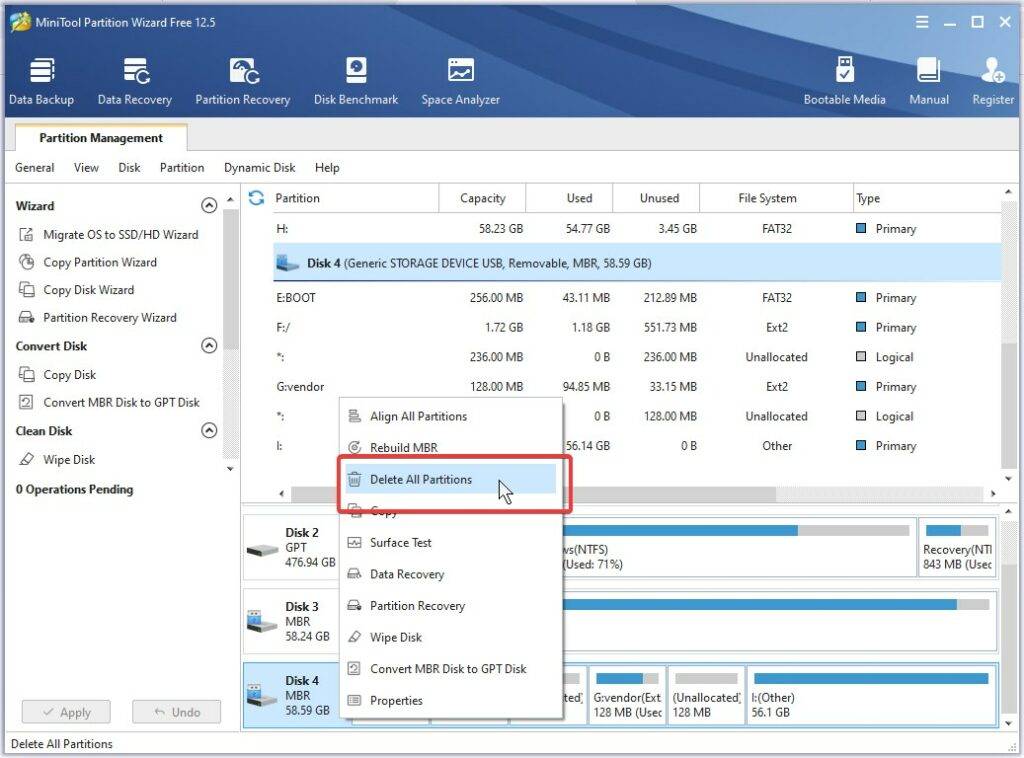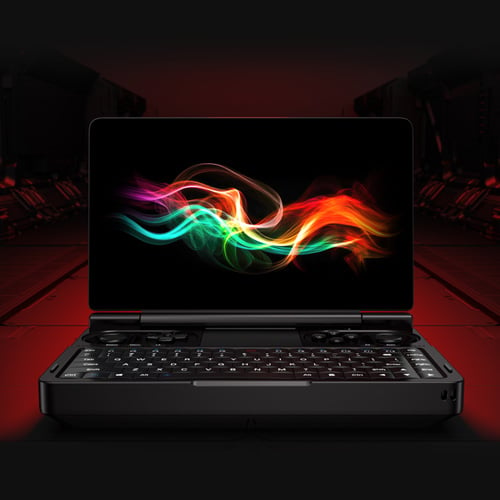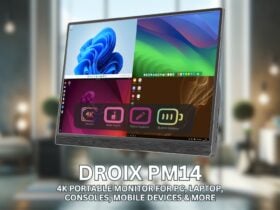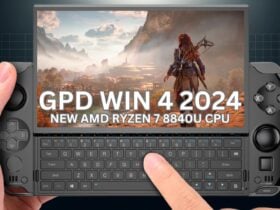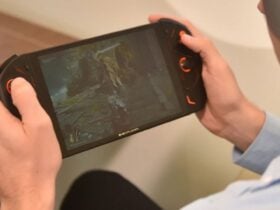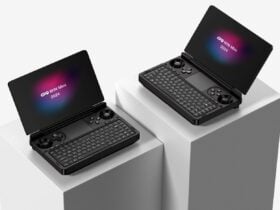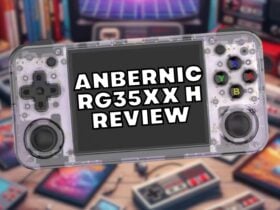It’s no secret we at DroiX are fond of gaming handhelds. That’s why we’ve put together this guide of all the best RG351 custom firmware currently available, to help you really get the most out of your recently purchased RG351P, RG351M, or similar device.
Why Do I Need RG351 Custom Firmware?
A common issue with a lot of retro gaming handhelds available on the market, is that the stock firmware is “lacking”. Perhaps the performance isn’t quite there, or maybe the user interface is a little slow.
While this is usually fine for casual usage, more seasoned gamers and power users will want to squeeze every little bit of power and functionality they can out of the devices.
This is achieved through custom firmware.
What is Custom Firmware?
Custom firmware is customized firmware, as the name implies.
While not always the case, most custom firmware meets the following critera:
- It is open-source
- Anyone can fork or contribute to the project as they wish.
- They are created by the community.
- Devoted hobbyists contribute their free time to make these operating systems the best they can.
- They are free!
- You don’t have to pay a dime to use them!
If you encounter any firmware that does not meet these three criteria. We would advise you to express caution, as they could be subject to any number of issues (security, ethics, legality, etc.)
Something important to note is that there is no perfect firmware. In the sense that no matter what you pick, there is a possibility that you’ll encounter bugs, particularly if you download beta, RC (release candidate) or “nightly” versions.
How To Use This Guide
In this guide, we will go over the universal steps in this section.
All firmware for the RG351 family is installed in this way.
- Prepare a microSD card
- Download the relevant image file (will be an .img, .img.gz file, or something similar)
- Flash it using your preferred tool.
- Insert into your RG351 and allow any first-boot operations to run (partition expansion, etc.)
If you are familiar with the process of flashing microSD cards, you can skip this entire section.
Important Disclaimer: While we at DroiX are strong advocates of emulation and game preservation. We do not condone the illicit sharing of copyrighted materials. No image files in this guide will come pre loaded with games or BIOS files. You will need to supply these yourself.
Download The Tools
The most essential tool for this guide is image flashing software. You will use this to actually apply the image files to the microSD card.
To summarize them, they use a blueprint file (often referred to as an image) to automatically create partitions, files and folders on a storage device.
Below we’ll list a few examples. All of which are free to use:
- Win32 Disk Imager
- Rufus (our preferred choice)
- balenaEtcher
- Raspberry Pi Imager
- ApplePi Baker (alternative for Apple users)
If you encounter any compressed files that are not in the basic .zip format, you may also need third-party archive manager software. We’ll link some popular picks below:
- 7zip (our preferred choice)
- WinZip (also available for Apple users)
- WinRAR
- PeaZip
Extract the compressed files with the archive manager software of your choice, then write the image file with the image flashing software.
Prepare an SD Card
You will need to prepare a microSD card before proceeding. The size of the microSD card depends on the device the firmware will be for.
- If the firmware is for an RG351P or RG351M, we would advise a minimum card size of 32GB.
- This is because both the games and the OS will need to share the same card.
- If the firmware is for an RG351V or RG351MP, we would advise a minimum card size of 16GB
- The OS and all related emulators will be going on their own card, so less space will be needed.
Preparing a microSD card is not as complex as it might seem. All you need to do is make it so that the card has one partition, and that your computer can natively access that partition.
While it is true the image flashing software will overwrite this image, it is the safest way to ensure the card is empty and that the flashing tools will behave as we expect.
We find that the best way to prepare a microSD card is to use a partition manager. Our favourite is MiniTool Partition Wizard, which is free to download.
Preparing your microSD card with MiniTool Partition Wizard
Flash the microSD card

Once you have prepared your microSD card and downloaded your chosen firmware, you’ll need to perform the flashing operation.
In the image on the left, we’re using Rufus to prepare our microSD card. Because it is free, lightweight, and easy to use.
- Ensure that the Device is set to the letter that matches your microSD.
- Select your chosen firmware’s image file (and ensure that it appears in the “Boot selection” box).
- Hit select once you are ready.
The operation will then proceed automatically. Do not remove the microSD card during this process, otherwise you will need to start again.
It still doesn’t work!
If following the universal steps does not work for you. There are a number of things to try:
- Make sure that your firmware file downloaded successfully.
- It is possible your internet may have cut out during the download, leaving you with a corrupt/unusable file.
- Ensure that you are using the right version of the firmware for your unit.
- The reason different versions of the firmware exist, is because devices with different screens and control layouts exist.
- It is unlikely that the firmware will work if the incorrect version is used for the device.
- The RG351P and RG351M are identical outside of the metal shell and wi-fi chip, so they can share 99% of existing firmware.
- Try using different image flashing software
- Some firmware has been reported to not play nice with certain images. For example, balenaEtcher w/ ArkOS
- Try using a different microSD card
- It could be that your microSD card is failing in some way.
- Try using a different microSD card in this case.
- Two reputable brands you can try are SanDisk and Samsung.
- Try downloading from a different location
- We’re not perfect! And there is a chance, however small, that the files we have uploaded have become corrupt.
- If this is the case, try downloading the latest versions of the firmware from their respective sites.
- Please leave a comment and let us know so we can fix any corrupt images!
The Best RG351 Custom Firmware
Below is a list of all the notable firmware available for the RG351 family at the time of publishing.
351ELEC

351ELEC holds the honour of being the oldest custom firmware available for the third generation of ANBERNIC handhelds.
The primary aim of the firmware is to build upon the stock EmuELEC firmware, and optimize it while improving the overall user experience.
You can consider 351ELEC to be “what the stock firmware should have been”. As it comes with a suite of pre-optimized emulators and tweaks, alongside other user-centric improvements.
If you’re just dipping your toes into custom firmware, we’d highly advise going with 351ELEC.
Download Links
351ELEC can be downloaded from the official 351ELEC github, and there is also a nicely-designed website available to browse too. However, we’ve also provided mirrors of the latest stable firmware available at the time (except for the RG351MP, which has no stable release at this time).
- 351ELEC for RG351P/M (2021/06/03)
- 351ELEC for RG351V (2021/06/03)
- 351ELEC for RG351MP [Beta] (2021/11/06)
ARKOS

ArkOS is an Ubuntu-based RG351 custom firmware distribution for the RG351 family of devices. Originally starting as a port of TheRA, it has since then forked off into an full firmware of its own right.
The aims behind ArkOS are to provide an optimized, adaptable and customizable platform for retro gaming.
It uses the same Ubuntu/Linux back-end that TheRA is based on. So developers are granted a greater degree of flexibility when it comes to adding and updating features to the system.
ArkOS also comes with the ability to natively run streaming apps such as Moonlight. Allowing it to “technically” play games it would normally not be able to. The caveat being some small input delay.
An additional nice feature is the presence of OTA updates, allowing you to receive new versions of the firmware without the need to remove the microSD card.
ArkOS does require a bit more tinkering to get-going than 351ELEC, making it a good option for more experienced users who really want to push their handheld retro console to its limits
Download Links
You can download ArkOS directly from the project’s wiki.
- ArkOS for RG351P/M (2021/05/01)
- ArkOS for RG351V (2021/09/26)
- ArkOS for RG351MP (2021/11/05)
TheRA (TheRetroArena)

TheRA (TheRetroArena) is RG351 custom firmware built upon the Ubunutu/Linux back-end. Granting developers and other enthusiasts access to much more powerful native development tools, which make adding features to the device much easier.
Like most of the other popular firmwares, TheRA comes with many small improvements to the overall performance and functionality of the device. But the main draw of TheRA is undoubtedly the absolutely immense number of platforms that it supports.
While not as optimized as some other firmware, TheRA grants you the ability to play games from over one hundred (100) different platforms.
Download Links
You can download TheRA from the development team’s website. You can also find mirrors here for the latest versions available at the time of publishing.
- TheRA for RG351P (RC 3)
- TheRA for RG351V (RC 1.3)
- TheRA for RG351MP (Beta 2.4)
Batocera
Batocera (also known as Batocera.linux) is a long-running lightweight linux distribution designed to turn low-power devices into fully fledged gaming machines.
The Batocera firmware was one of the first few to be developed for the RG351, and spearheaded the way for better N64 emulation on the platform. However, since then, other firmwares have adopted the same emulator. Leaving Batocera without much that really makes it “stand out”.
There is not a great deal to say about this firmware other than it’s a well-made, linux-based firmware for the RG351P. It is certainly worth checking out to see if the configurations and features it offers you are worth it for you.
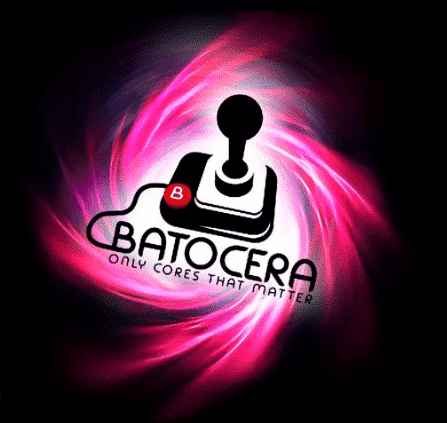
One particular grievance we have with Batocera however is the lack of an “easy access” games partition in the image. You’ll need some tool such as Linux File Systems for Windows by Paragon Software in order to add games in the same way you would normally for other systems.
Download Links
You can download Batocera directly from the development team’s website. Unfortunately, only the original RG351P (and by extension, the RG351M) are supported at the time of writing.
- Batocera for RG351P (2021/09/30)
Lakka

Lakka is currently one of the more obscure options for RG351 custom firmware.
It foregoes the EmulationStation front-end in lieu of a purely RetroArch-focused firmware. Removing any unnecessary overhead and allowing the system to squeeze out every last bit of power available.
It is also very easy to update, thanks to the inclusion of OTA updates.
However, the learning curve for using Lakka is steeper than other firmware due the lack of the streamlined user-friendly EmulationStation UI.
It also suffers in performance when it comes to platforms that perform better with stand-alone emulators, such as the Nintendo DS.
All in all, this firmware is a nice alternative to what already exists, but ultimately unnecessary for the RG351 unless you’re a RetroArch purist. Because the lack of overhead does not let it play anything that other firmware cannot.
Download Links
Lakka has a nicely-maintained website with an easy step-by-step process for finding and installing the appropriate version for you. We’ve also provided some links below to mirrors:
- Lakka for RG351P/M (2021/11/08)
- Lakka for RG351V (2021/11/08)
- Lakka for RG351MP (2021/11/08)
351Droid

351Droid is RG351 custom firmware that attempts to bring LineageOS to the RG351 family of retro handhelds.
Despite being an experimental endeavour, an impressive level of functionality has been attained.
Using Android grants the system access to a number of already matured, fairly optimized emulators. In theory, LineageOS should also grant access to game streaming apps (Moonlight, etc.) as well as Android games themselves.
351Droid, while cool, is still moreso a proof-of-concept at this point in time. And is still quite buggy overall. But we think it’s worth checking out for the “wow” factor alone!
Download links
You can download the latest version of 351Droid through this Google Drive folder.
A website for the project was briefly hosted, but is no longer maintained at the time of writing. Nowadays, any discussion about this firmware can be found in the Retro Handhelds discord.
We’ve also provided mirror links below:
- 351Droid for RG351P/M (2021/07/31)
- 351Droid for RG351V (2021/09/18)
- 351Droid for RG351MP (2021/09/18)
Summary
We hope you’ve found this guide to be useful! If you’re in the market for an ANBERNIC handheld of your very own, please check out our wide selection of retro handhelds over at droix.co.uk.
If you have any feedback/issues with the download links, please feel free to leave a comment!





